Business Community
Business spotlight: Artondale Farm restores a piece of region’s history
For years, Jess and Scott Hogan watched the old Gig Harbor Grange building deteriorate. They had a front-row view of it from the adjacent property, where they operate Artondale Farm.
The local grange went dormant back in 2011, and ownership of the building reverted to the Washington State Grange organization. The Hogans, whose farm forms an L-shape around the grange property, contacted the state group about purchasing the building and adding it to their farm.
“It was breaking my heart to watch such a historic building in disrepair,” Jess Hogan said.
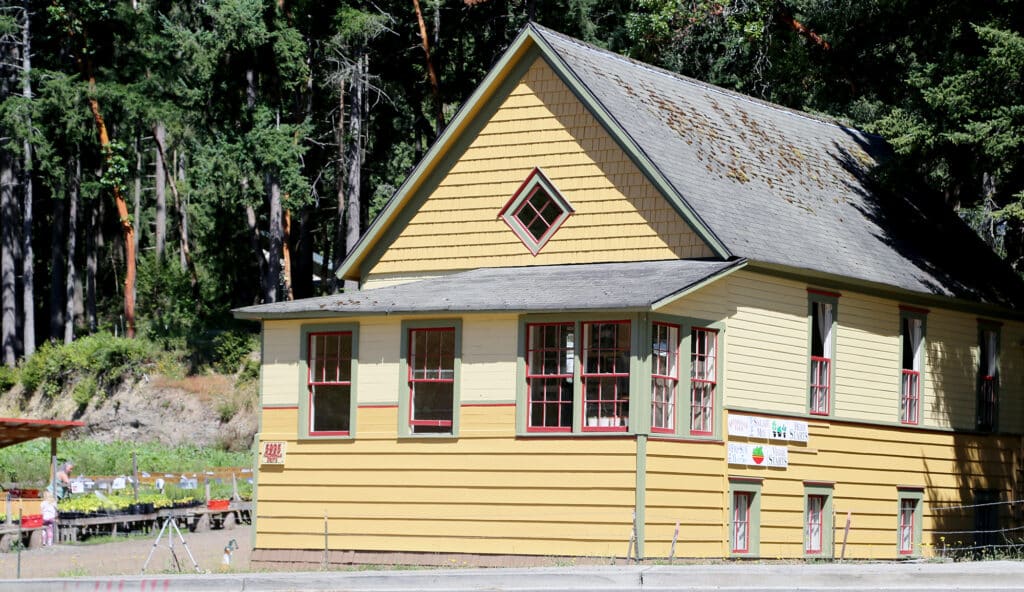
After years of polite solicitations, the Grange agreed to sell the building to Artondale Farm in 2016.
That’s when the work really started for the Hogans.
History of the old Grange building
The building started life as the Methodist Episcopal Church in 1912, and its layout has the feel of small community church. Ownership transferred to the Artondale Gospel Lighthouse – Pentecostal in the late 1930s, according to a 2014 blog post by the Harbor History Museum.
It didn’t become a grange hall until 1956, when Gig Harbor Grange No. 445 bought the building and moved in.
The Grange is lesser-known now than it likely was then. Founded in 1867 as a fraternal and advocacy organization for farmers, the Grange developed into a force in the Midwest and Western U.S.
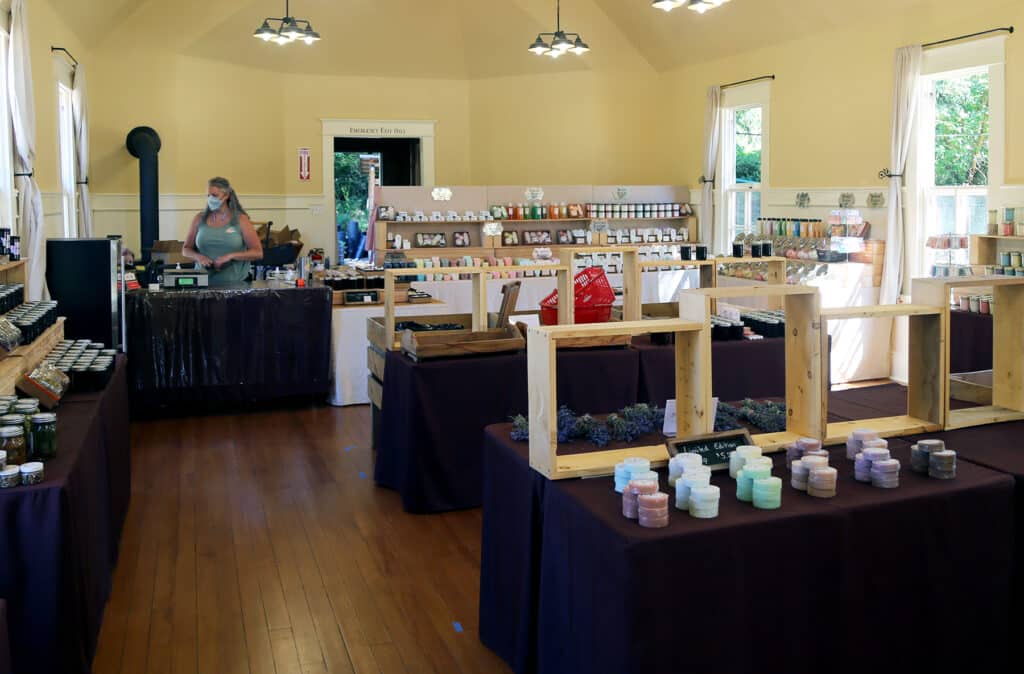
Jess Hogan works inside the Artondale Farm Store, in the building that previously housed the Gig Harbor Grange and at the Methodist Episcopal Church. Vince Dice
The Washington State Grange dates back to before statehood. Gig Harbor’s Grange No. 445 was founded in 1910, but didn’t have a permanent home until it bought the former church at the corner of Wollochet and Artondale drives in 1956.
Membership dwindled in the early 2000s, however, as the group struggled to attract younger members and the character of the surrounding community changed. The building remained mostly vacant for five years after the Grange No. 445 shut down in ’11 until the Hogans finally got their shot at restoring it.
Artondale Farm buys the building
Given its agricultural roots, it’s appropriate that the building ended up part of a farm.
Getting the building to the point where it can be useful to the Hogans, however, took some time. The old grange serves as the retail store for the farm, chock full of items grown or made on the neighboring property.
But it was in no shape to do that when the Hogans bought it.
A family — maybe several families — of squirrels had taken up residence inside. Bats lived in the belfry. The basement had suffered extensive water damage. Paint was peeling and the beautiful old wood floors needed resurfacing.
“It was a shambles,” Jess Hogan recalled. “It needed a lot of work.”
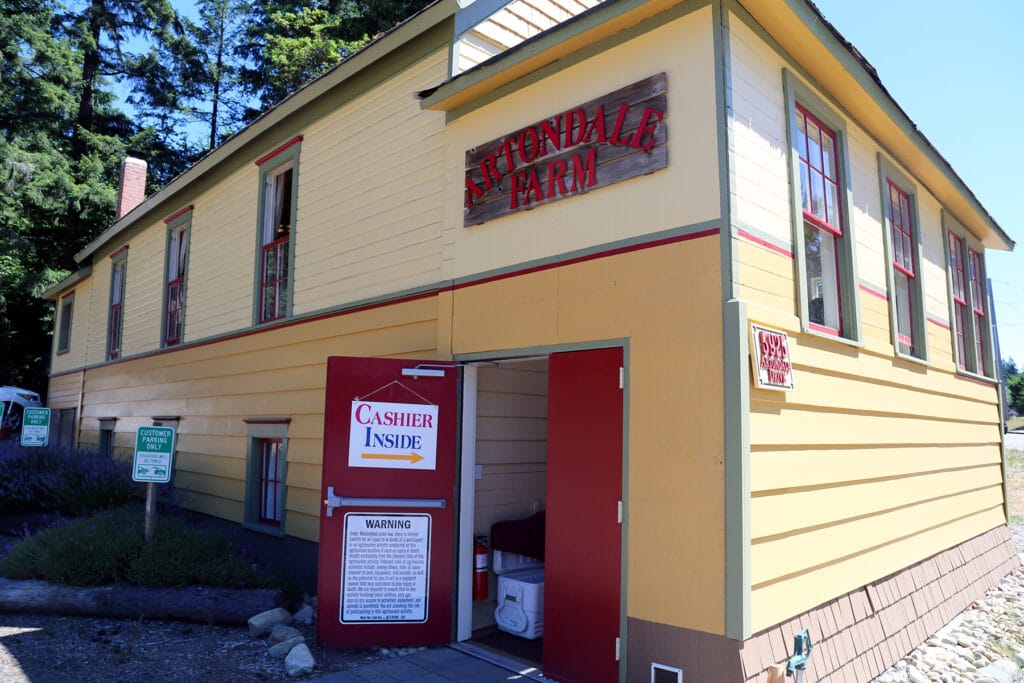
The entrance to the Artondale Farm Store, inside the former Gig Harbor Grange Hall. The Hogan family, who own the adjacent farm, have been restoring the building since 2016. Vince Dice
The Hogans spend their springs and summers operating a farm, so the bulk of the work on the old grange takes place in the fall and winter.
They’ve accomplished much in that time. The walls have been resurfaced, the floors sanded and refinished, the water damage repaired. New trim has been installed around the windows. The family’s farm cats made quick work of the squirrels.
After a delay due to the Covid-19 pandemic, the building entered service as the farm store in 2021 and is open again this summer.
The restoration
The Hogans are uniquely suited to take on this project.
Scott Hogan has a college degree in architecture and is a skilled carpenter.
Together, Scott and Jess restored a 1923 home in Southeast Portland before moving back to Gig Harbor, where both were raised.
Their Portland home and the current project both require a lot of research.
The Hogans looked through old photographs to find examples of period-appropriate trim pieces, then mimicked them in their rebuild.
They also researched what interior and exterior wall colors would be appropriate to the era. The mustard yellow exterior isn’t the original — since the building started life as a church, it was predictably white — but the Hogans found photos of homes from that era with a similar hue.
The interior color does match the original. They found a paint chip in the back of the building and took it to a paint store, which was able to match the shade.
“We want to bring it back to what it should have been when it was built in 1912,” Jess Hogan said, but with modern conveniences like electricity and indoor plumbing.
Looking around the inside of the building, she added: “This is how this building should have looked. I don’t think it ever looked this way.”
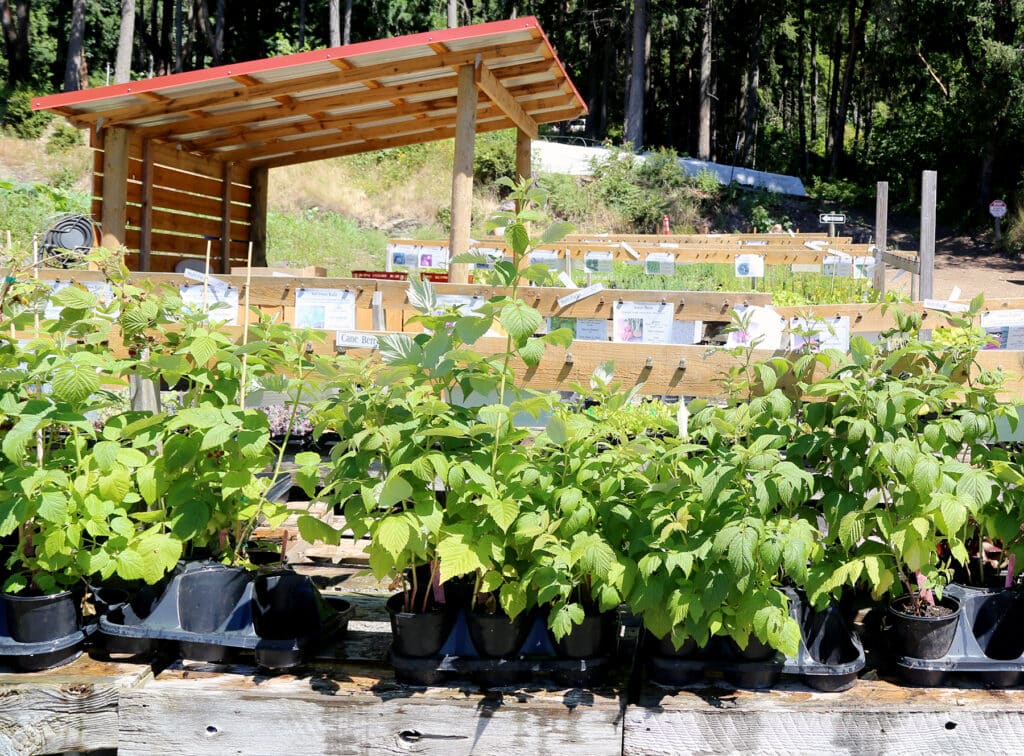
Plants for sale at Artondale Farm on July 19, 2022. Vince Dice
How the building fits with Artondale Farm
The hard work is paying off, as the building has provided a significant benefit for Artondale Farm.
Previously, the farm sold produce and other goods out of its parking lot, as well as at farmer’s markets. Having an actual storefront has been beneficial, Jess Hogan said.
Selling produce outside near a busy intersection can be problematic. Exhaust and gusts from passing cars don’t exactly make lettuce more appetizing. The pair also sell non-farm items, including bath and body products. Those can spoil if left too long in the heat.
Also for sale inside the former grange hall last week were jam, lavender sprigs, veggie starts and culinary herbs. Raspberries were nearly ripe and ready for sale. A full assortment of produce — including tomatoes, peppers, beans and peas — will be available “as soon as Mother Nature gets with the program,” Jess Hogan said.
“It’s been awesome for business,” she said. “It’s allowed us to display a lot more stuff than when I was selling outside.”
The Hogans are interested in seeing photos from when the building was a grange hall, or even back when it was a church. This will help with restoration efforts, and the Hogans hope to turn the entry area into a sort of mini-museum.
Anyone with such photos can contact Artondale Farm at [email protected], by text to (253) 313-3945 or at the store, 5925 Artondale Dr. The store is open from 11 a.m. to 5 p.m. Fridays, Saturdays and Sundays during growing season.
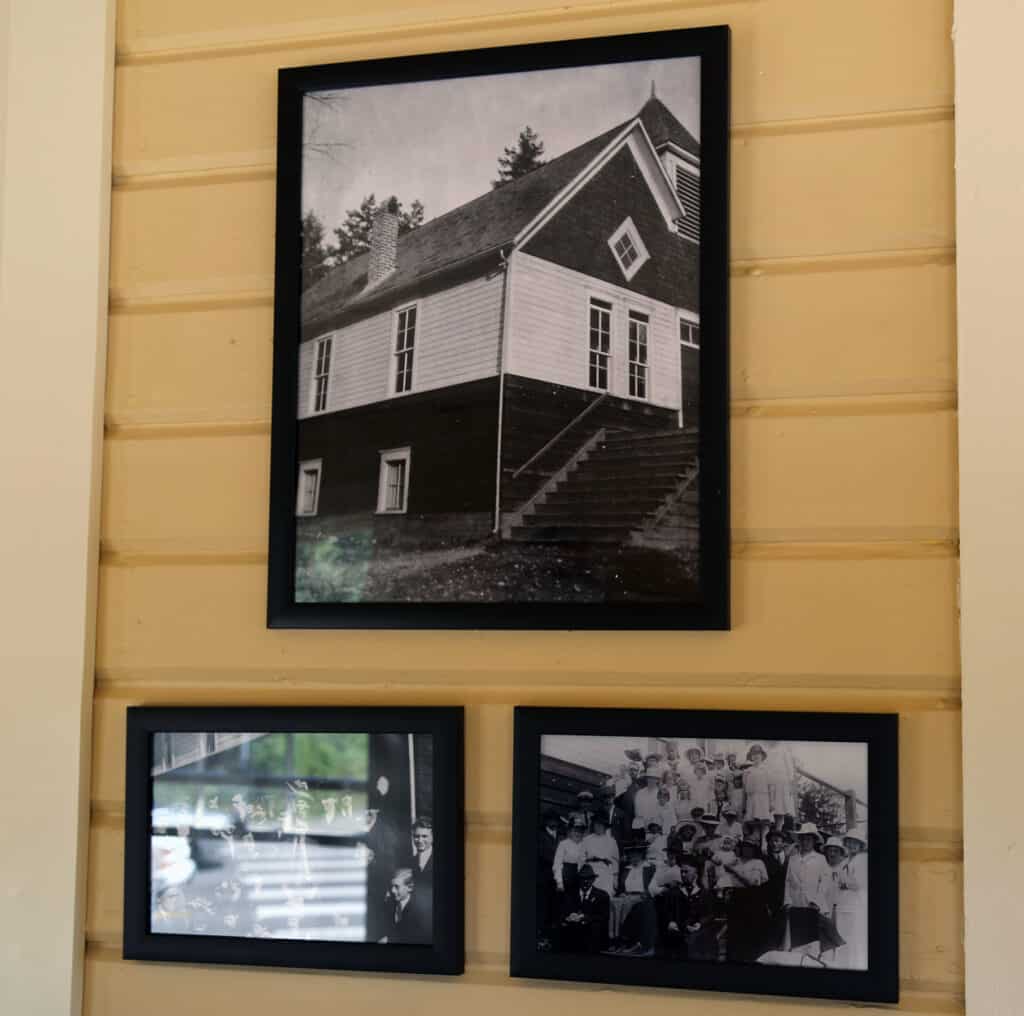
Old photos of the former Gig Harbor Grange building decorate the entrance to what is now the Artondale Farm Store. Vince Dice
